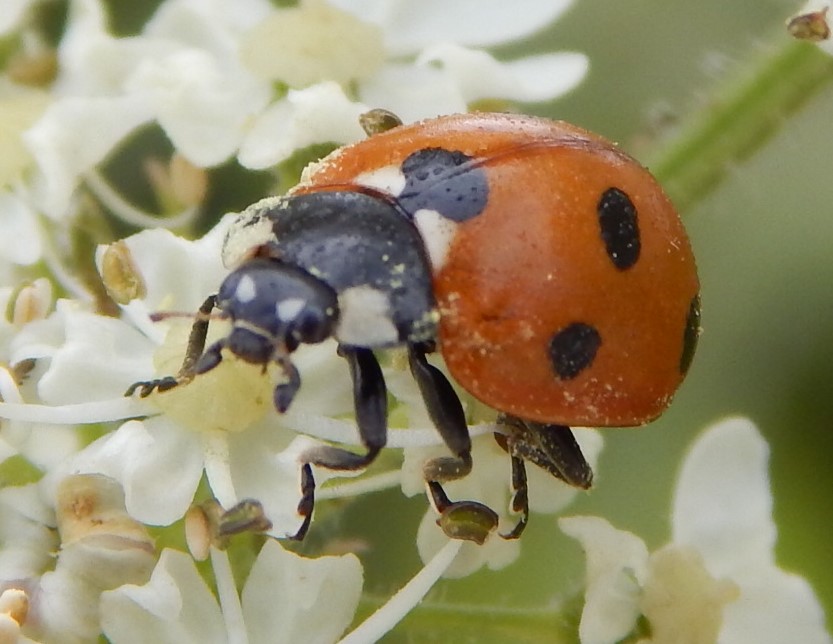
[086] Coccinella septempunctata, Seven-spot Ladybird
Introduction
Coccinella septempunctata, the Seven-spot Ladybird, was until recently the most common and widespread ladybird in Britain. It’s what most people would imagine when using the word ladybird.
In North America it is known as the seven-spotted ladybug.
Taxonomy
Kingdom – Animals
Phylum – Arthropods
Class – Insects
Order – Coleoptera (Beetles)
Family – Coccinellidae (Ladybirds)
Genus – Coccinella
Scientific Name – Coccinella septempunctata
Name
To most people in Britain this is the only species of ladybird. The word ‘ladybird,’ and the names of the genus, Coccinellus, and family, Coccinellidae, all come from this beetle from its red colour and seven spots. The Virgin Mary was often depicted in a red cloak and the spots on this beetle were taken to signify her seven joys and seven sorrows. So, this beetle became known as Our Lady’s Bird or the Lady Beetle. It became the Ladybird and, in the USA (where bug is used more generically to mean any insect or small invertebrate,) it was changed to Ladybug. In entomology, they are sometimes now known as Ladybird Beetles or Lady Beetles.
Inevitably the name ladybird has spread to other small beetles with spots.
Coccineus is Latin for scarlet and, of course, septem-punctata means seven-spotted.
Beetles
This is our first species of beetle. Coleoptera is by far the largest order of insects with about half a million known species and probably at least another half a million yet to be discovered. They generally have a particularly hard exoskeleton and use only one pair of wings. The front pair of wings are hardened into elytra (Singular: elytron,) which are used as wing covers.
There are at least two hundred families of beetles covering diverse habitats and lifestyles. The larval stage may live for many years and for some species the adult stage is short-lived.
Ladybirds
Coccinellidae is a widespread family of small beetles, many much smaller than this one. There are about six thousand species, many of which have brightly coloured elytra with spots, stripes or other patterns. They are dome shaped with small legs. Some have no markings and are not obviously ladybirds and some similarly shaped small beetles from other families look superficially like ladybirds.
Many species of ladybirds are considered useful as they prey on insects that are considered pests – but some ladybirds are herbivorous.
Description
Coccinella septempunctata is a typical ladybird. Its elytra are bright red, sometimes orange-red, with seven black spots. Many ladybirds are named from the number of spots and those with an odd number have at least one spot on their midline, coming from both elytra. With a body length of about a centimetre, it is larger than most of the other rarer UK species.
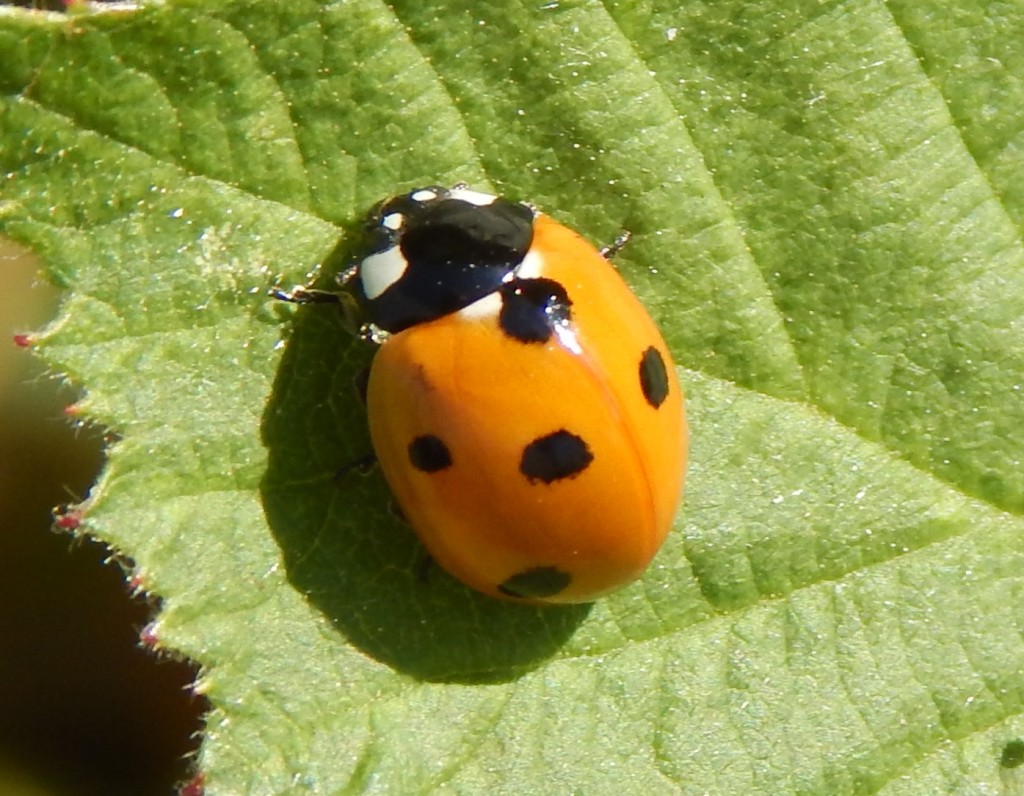
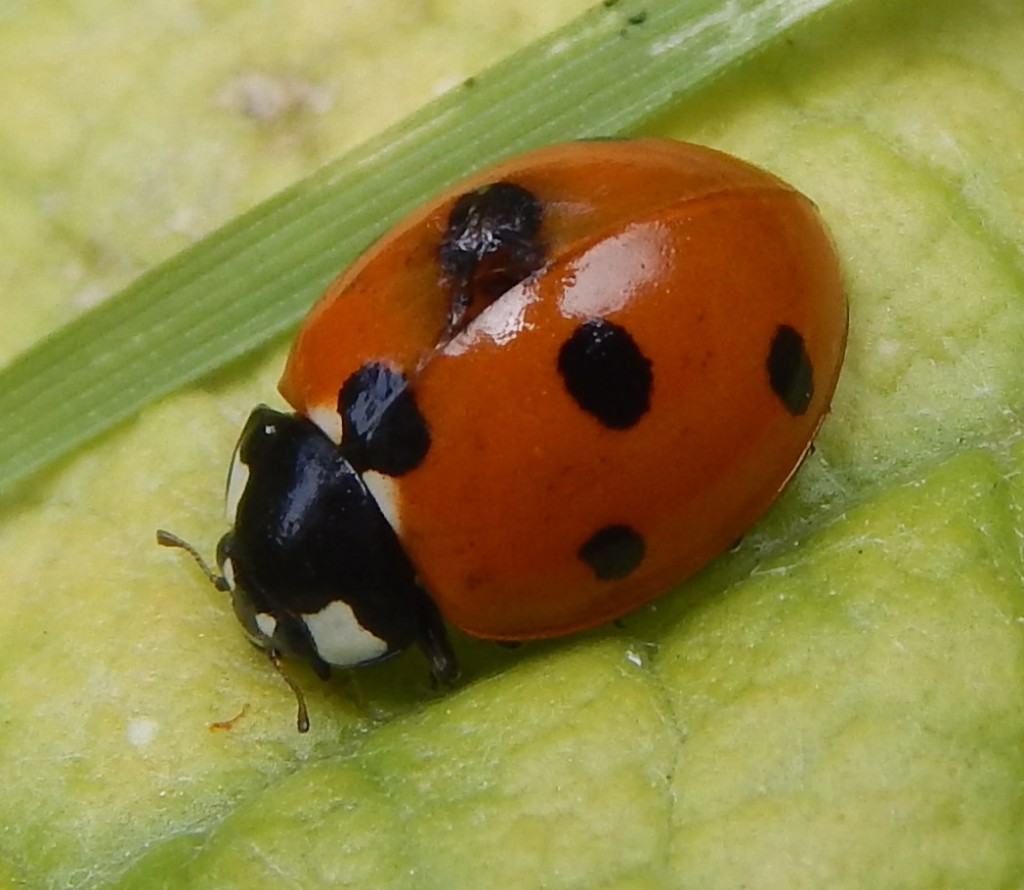
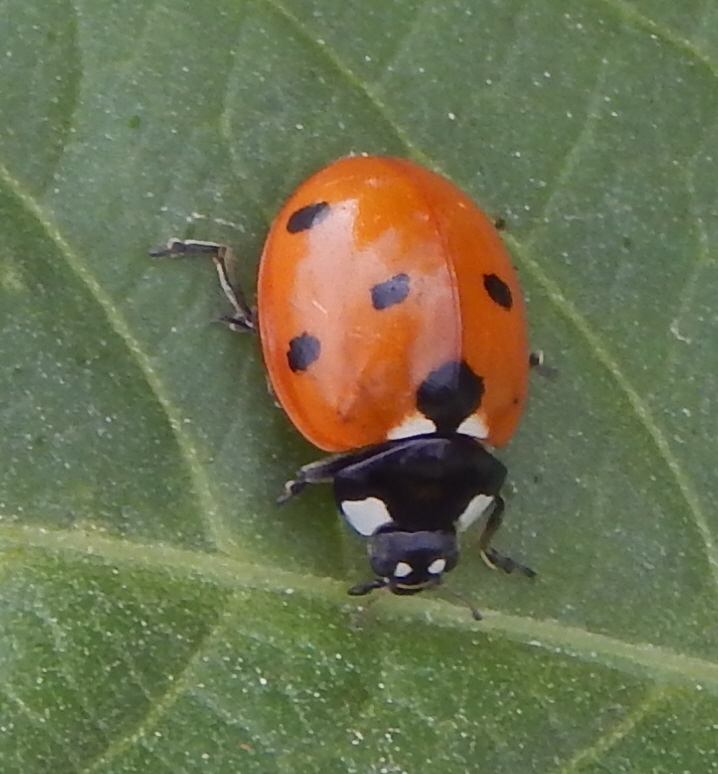
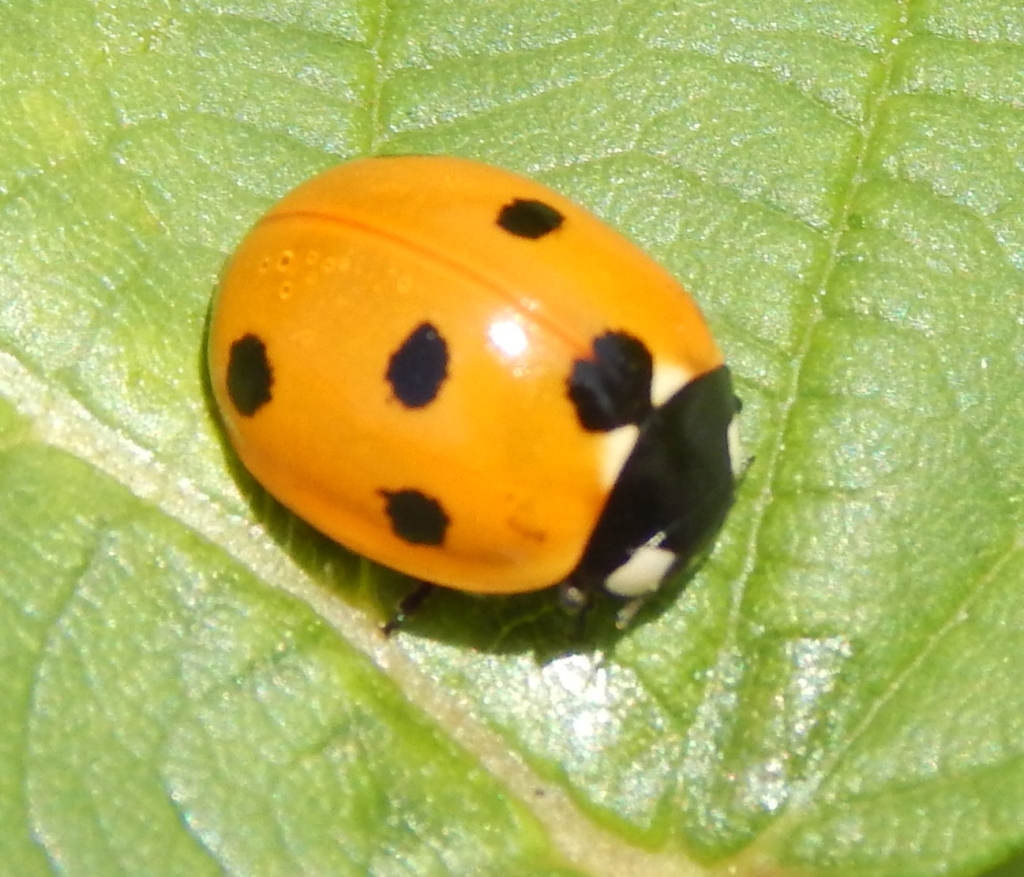
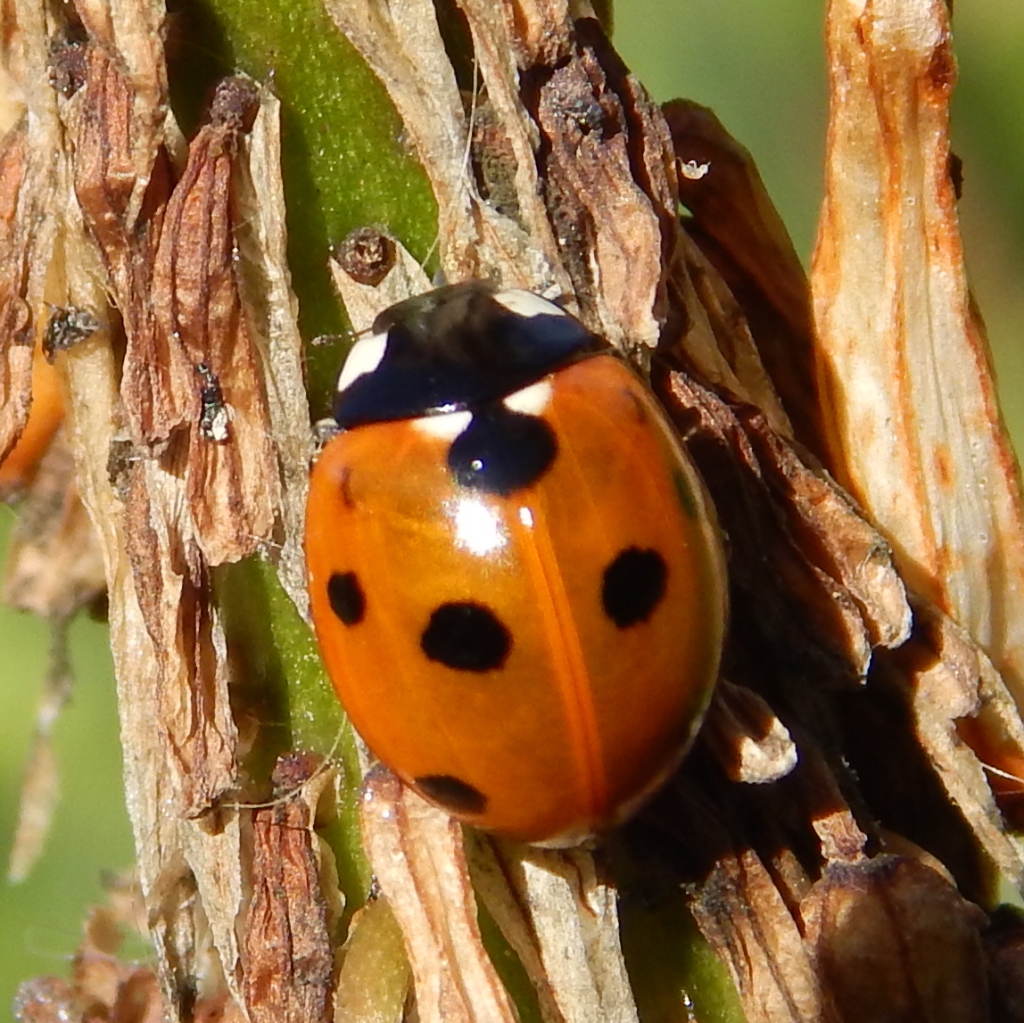
Both the larval and adult stages feed voraciously on aphids or sometimes other small insects such as leafhoppers.
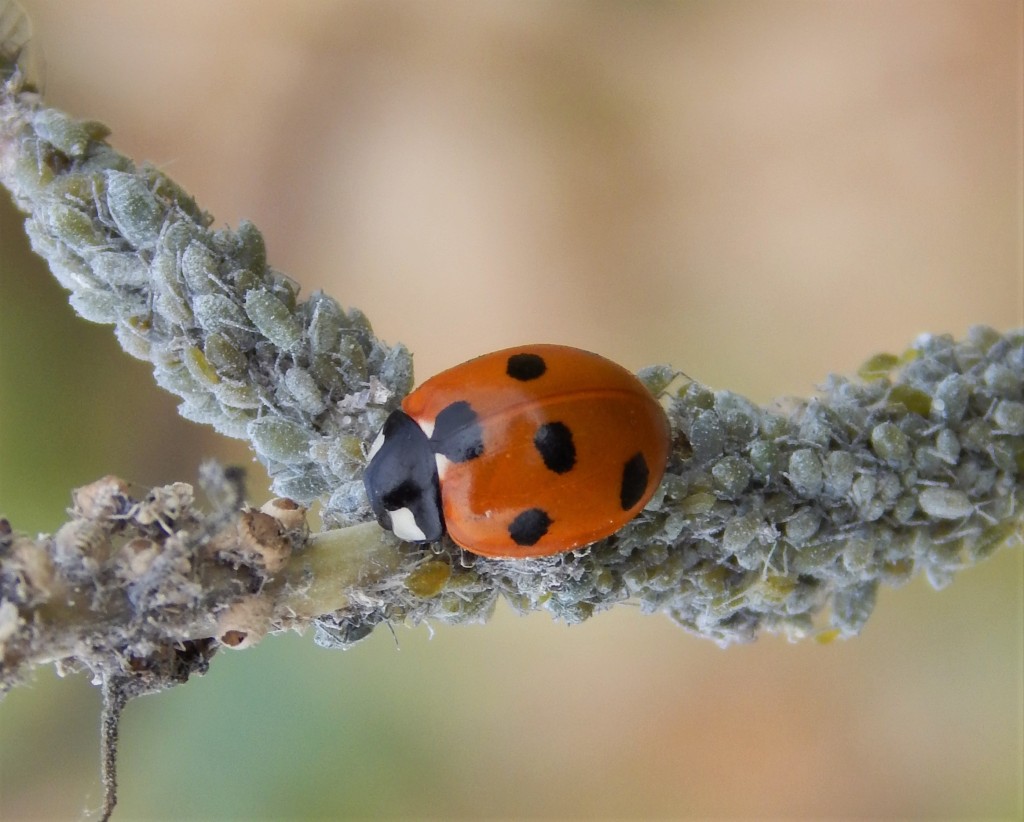
Habitat and use
The 7-spot Ladybird is found in Europe, most of Asia and Australia and lives in many different habitats, wherever there are aphids to eat.
It has been introduced to the USA to control aphids and is spreading. Five US States have it as their official State Insect.
Other Notes
Numbers of 7-spot Ladybirds in Britain have declined considerably in recent years with the advent of [169] the Harlequin Ladybird. At least 95% of the ladybirds I now see are Harlequins.
See also
There are several other species of ladybird found in Britain. Most are significantly smaller.
[278] 14-spot Ladybird will look at some of them. We also now have the Harlequin.
